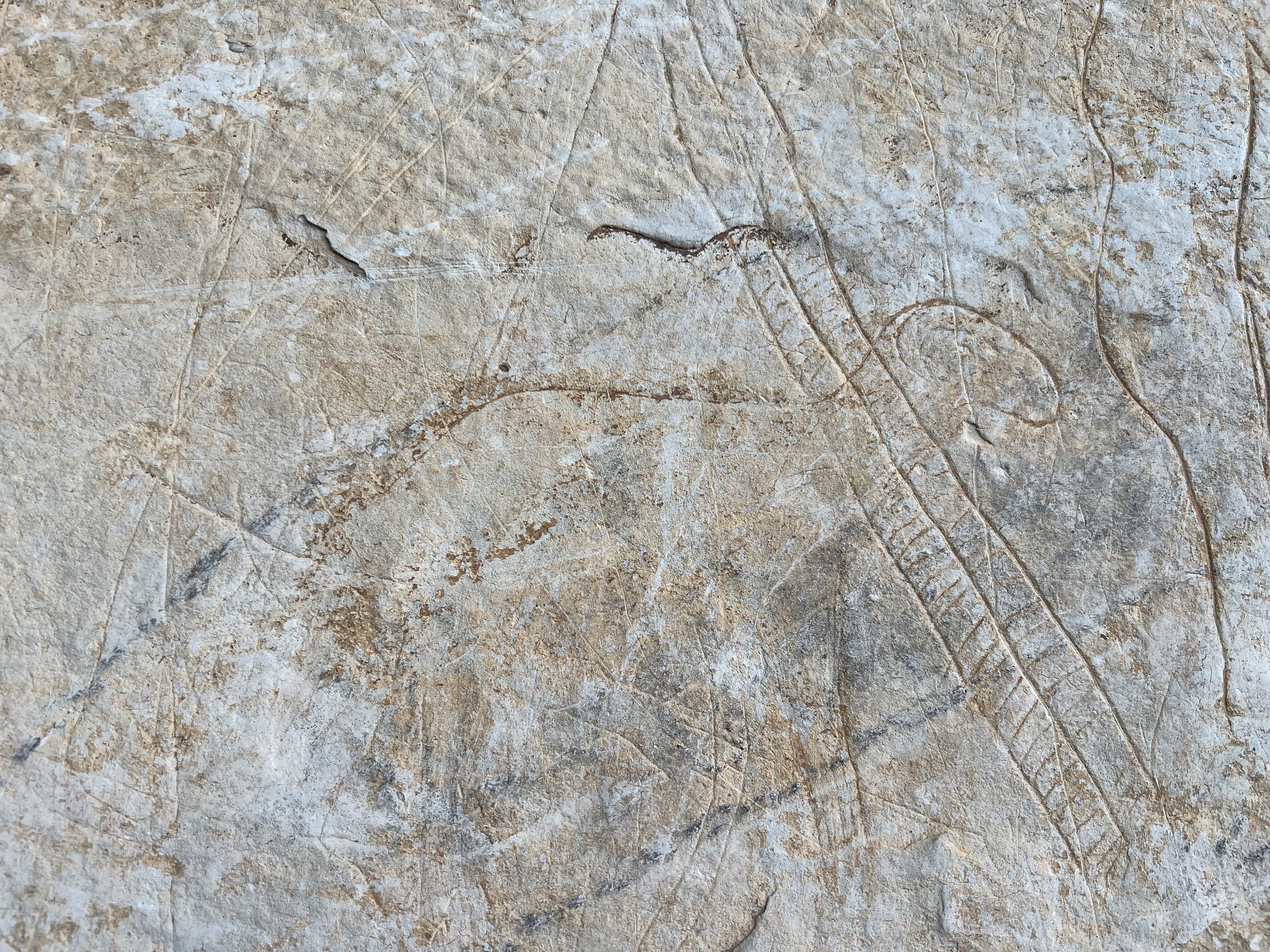In the rocks
Semi and Abir fanning the flames of our lunch fire
I had lunch yesterday in a small overhanging rock shelter called R’mada in the Djebel Ousselat area of Tunisia. Our guide Semi, had collected dried wood and built a small fire that he let burn down into embers upon which we roasted tomatoes, green peppers and a butterflied turkey breast. We ate this with bread and local olive oil just metres away from the Neolithic rock carvings we had hiked to see.
The carvings in the R’mada cave are the oldest in Tunisia, dated to around 5500 BC; they’re wild and varied, from a lovingly naturalistic portrait of a sheep to a wild ram’s head and fleece cloaked figure overlaid by a ram itself, seemingly engraved in some mystic fever dream.
Paleolithic engraving of a sheep, R’Mada, Djebel Ousselat
The wilder more mystic image of a man presumed to be wearing the head and fleece of a ram, engraved across him is another ram.
It occurred to me as we sat over lunch that this spot had likely seen lunches of a very similar nature for at least seven and a half thousand years. Making it both a humbling and moving moment.
The age of the engravings, gravure rupestris in French (recognising the Latin root of in the rocks rather than the Anglophone term Paleolithic which takes instead from the Greek lithos) places them at the end of an era known as the African humid period, indeed other local art from the era shows hippopotami, giraffes and rhino, all animals that are now native to savanna and other wetter climes. It’s telling how the landscape has suffered not only from there realignment of the earth’s axial tilt but more brutally from human mismanagement.
The nearby El Jem is on the site of Roman city Thysdrus which grew fat on enormous grain and olive oil revenues. The surrounding landscape there, like everywhere else nearby, is now barren but for scrub and olive trees. Sheep and goat herds roam the hills eating what remains.
Furthermore it was hard not to think on the parallels between us sitting in this once lush landscape carefully nurturing the flames of our lunch fire with the wild fires that were at that moment turning the once paradise of Los Angeles into a deadly inferno after another hottest year on record.
It wasn’t just the flames that seemed intertwined. Our own lunch choices could have been designed to highlight the interconnected warp and weft of this historical tapestry in which I sat. Tomatoes, peppers and turkey, all transplants from the Americas, both North and South.
Rupestris; ‘from the rocks’, also the name of another notable American transplant. Vitis Rupestris, one of the key root stocks that were brought over to rescue European viticulture from their fellow trans-Atlantic passenger the Pylloxera louse.
The root stocks that, along with the climate change that is laying waste to the West coast of America, are making a wine industry not only possible but thrilling to be part of. The wines of which I’ll be taking with me back to Africa in a week or so as I callously disregard any meaningful attempt at mitigating my Carbon footprint in an attempt to learn better how to work with grape varieties who’s potential is blossoming in the home just as so many others are losing theirs.


